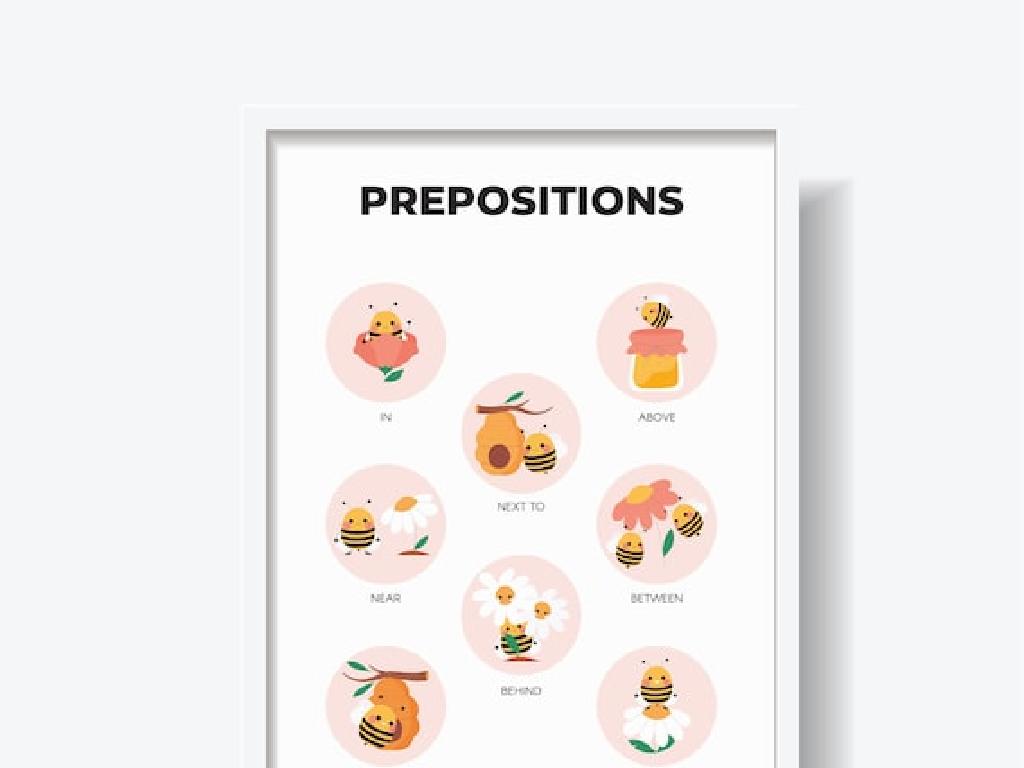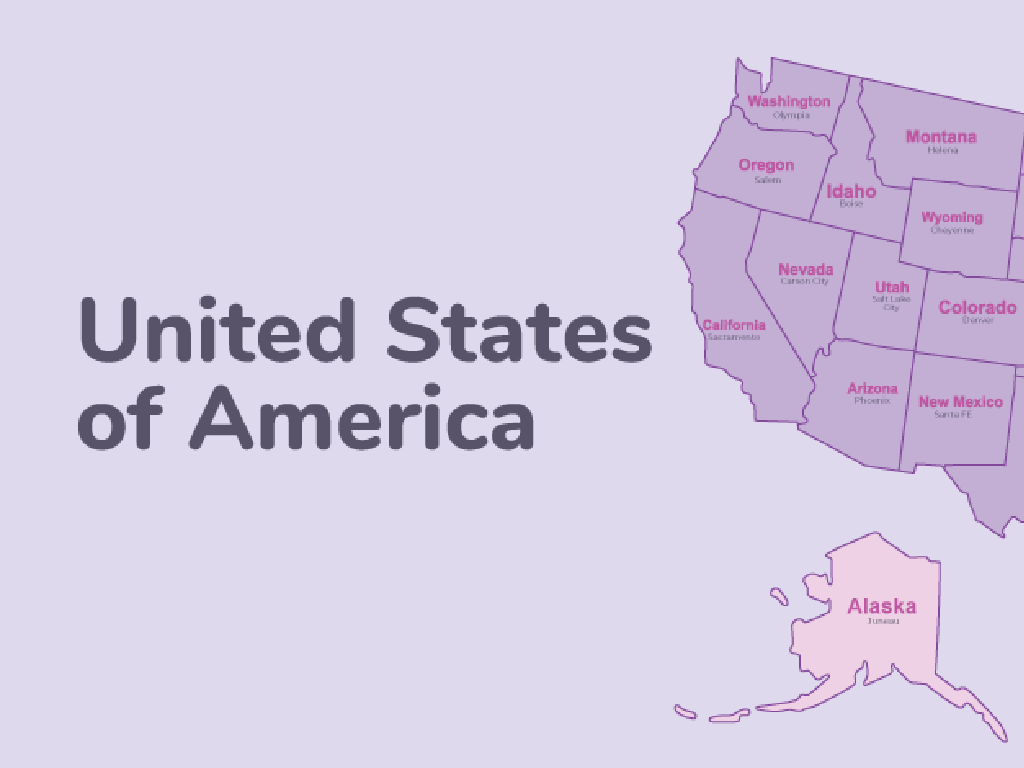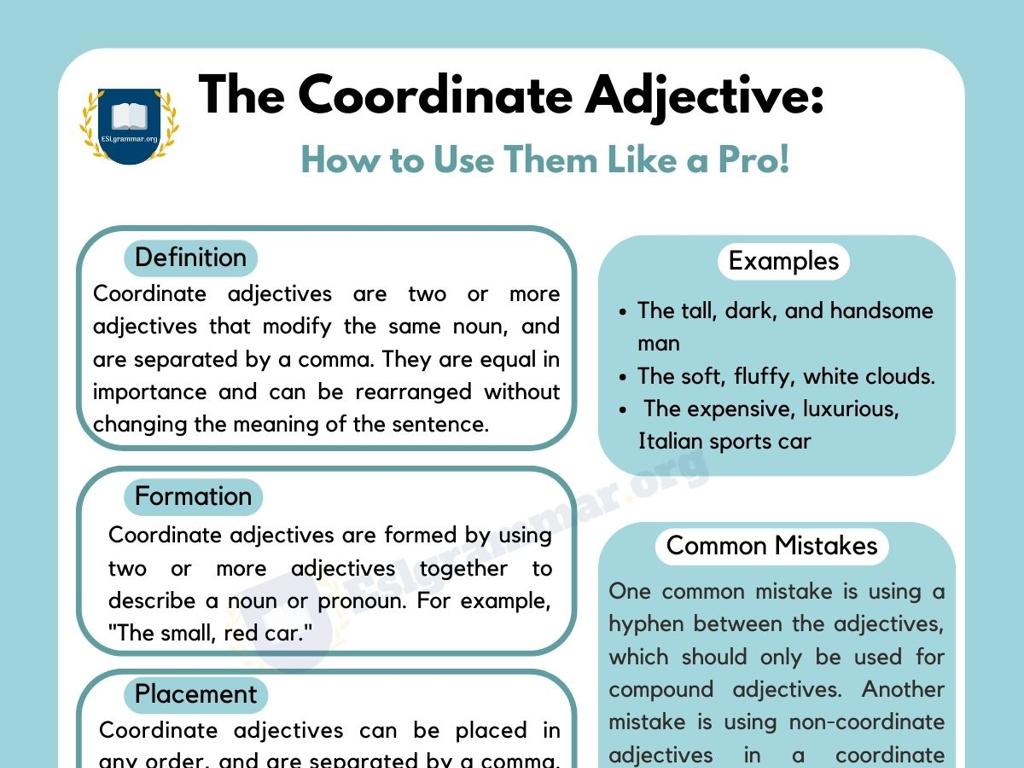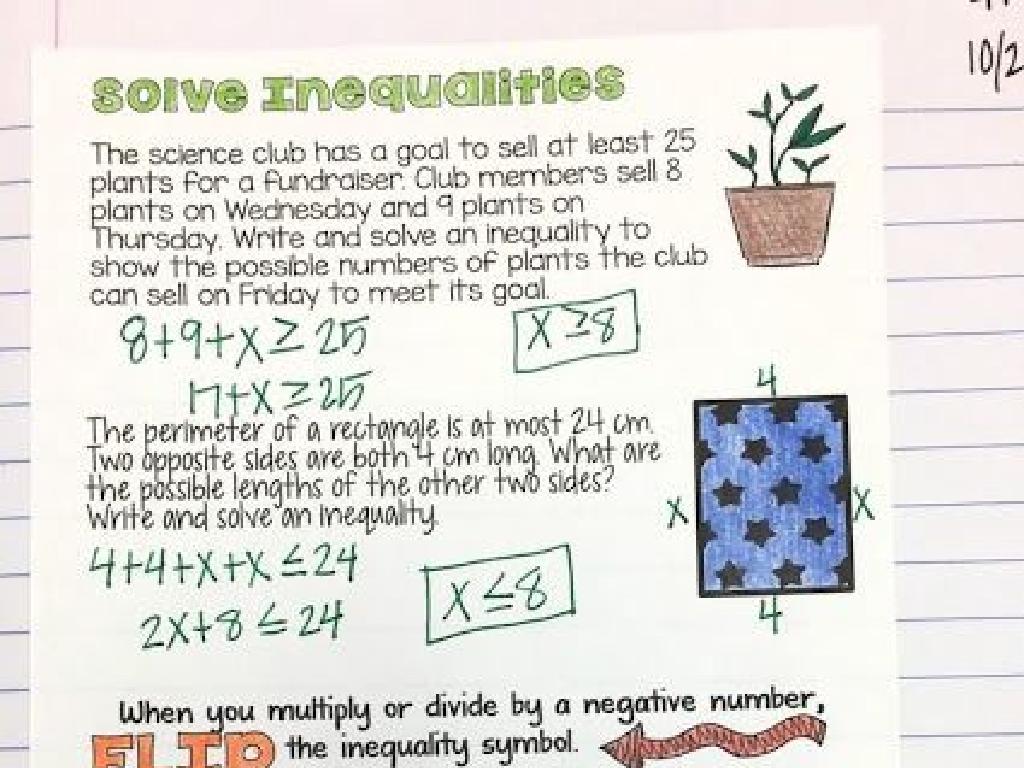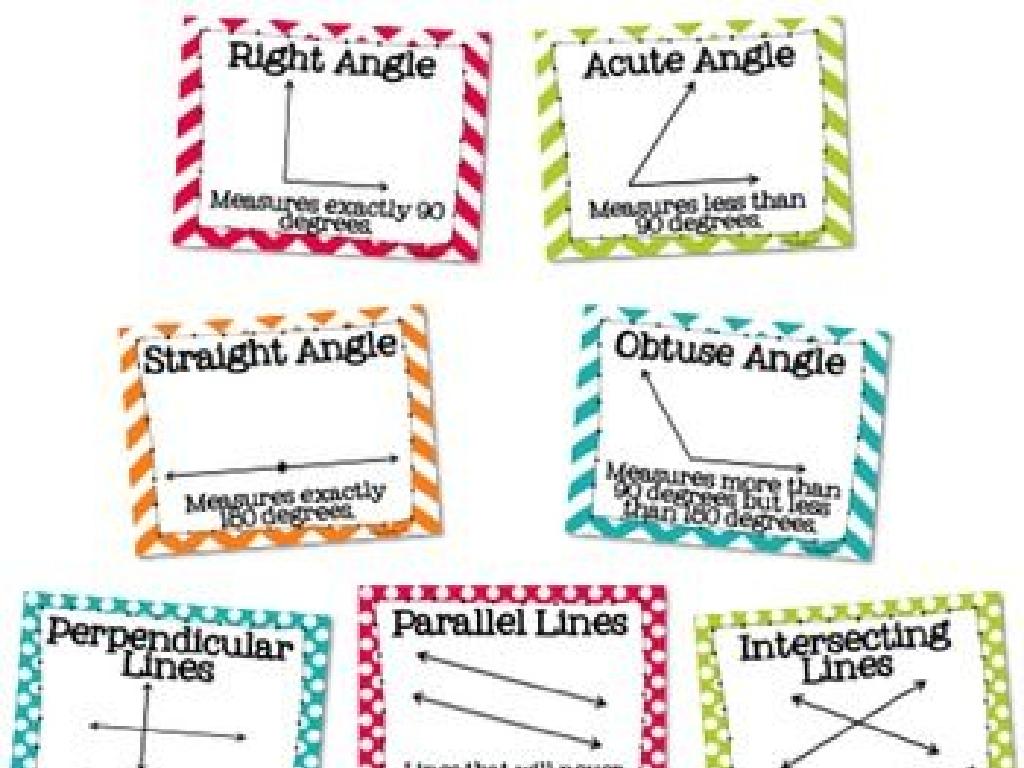Area
Subject: Math
Grade: Second grade
Topic: Area And Tiling
Please LOG IN to download the presentation. Access is available to registered users only.
View More Content
Welcome to Area Exploration!
– Greetings, brilliant minds!
– Introducing the concept of Area
– Area is an important math concept
– Area is space inside a shape
– Like the floor space in your room
– We’ll explore how to measure Area
– Using tiles, we can count the space
|
Begin the class with an enthusiastic greeting to capture the students’ attention. Introduce the concept of Area as a fundamental part of mathematics that they encounter in everyday life, such as the space where they play. Explain that Area refers to the amount of space inside the boundary of a two-dimensional shape. To make it more relatable, compare it to the floor space in their room or the surface of their desk. Later, demonstrate how to measure Area using non-standard units like tiles, which will lead into the concept of tiling as a way to cover a surface completely without gaps or overlaps. This will set the foundation for understanding how to calculate Area with standard units.
Exploring Area
– Area is measured in squares
– Like tiles on a floor, we use square units to measure area.
– It shows space inside a shape
– Think of the space where you can draw or color.
– Imagine painting inside a shape
– Pretend you’re an artist, filling in all the space with color.
– Area is where paint covers
|
This slide introduces the concept of area to second-grade students. Area is a measure of how much space there is on a flat surface or inside a two-dimensional shape. It is important to explain that area is measured in square units, which can be related to placing tiles on a floor. To make it more relatable for the students, use the analogy of painting the inside of a shape, where the area is the part that would be covered by the paint. Encourage students to visualize filling in spaces with color as a way to understand the concept of area. Provide examples of simple shapes like squares and rectangles and demonstrate how to count the square units inside them.
Discovering Area with Tiles
– Measure area with tiles
– Each tile is one square unit
– Imagine a tile as a small square on the floor
– Count tiles to find area
– Just like counting apples in a basket!
– Area is the number of tiles
– If you have 4 tiles across and 3 tiles down, the area is 12
|
This slide introduces the concept of area measurement through the use of tiles, which is a tangible method for second graders to grasp the abstract concept of area. Each tile used covers a square unit of space, and by counting these tiles, students can determine the area of a space. It’s a practical activity that can be done in the classroom using physical tiles or illustrations on paper. Encourage students to visualize the tiles covering a flat surface and ensure they understand that the area is the total number of square units that fit within a shape. You can extend the activity by asking students to arrange tiles in different shapes and compare the areas.
Understanding Area: Rectangles
– Rectangles have 4 sides
– Area equals length times width
– Multiply the longer side by the shorter side
– Example: 4 tiles by 3 tiles
– Length of 4 tiles and width of 3 tiles
– Area is 12 square units
– 4 tiles x 3 tiles = 12 tiles in total
|
This slide introduces the concept of area as it applies to rectangles, a shape familiar to second graders. Start by discussing the properties of rectangles, emphasizing that they have four sides. Explain that to find the area, which is the size of the surface inside the rectangle, we multiply the length (the longer side) by the width (the shorter side). Use a tangible example, such as floor tiles, to help them visualize the concept. For instance, if a rectangle has a length of 4 tiles and a width of 3 tiles, then the area would be 12 square units, since 4 times 3 equals 12. Encourage students to think of other examples and to practice with different rectangle sizes.
Let’s Practice Finding Area!
– Pair up for area discovery
– Use tiles to measure shape areas
– Cover the shape completely with no gaps or overlaps
– Count carefully and double-check
– Each tile represents a square unit of area
– Share results with the class
|
This slide introduces a hands-on class activity where students will work in pairs to explore the concept of area. Provide a variety of shapes for students to work with and ensure they have a sufficient number of tiles. Encourage them to place the tiles carefully to cover the entire shape without leaving gaps or overlapping. Each tile represents one square unit, which will help them understand how to calculate area in a tangible way. After they have counted the tiles, they should verify their count with their partner to ensure accuracy. Finally, ask the pairs to present their findings to the class, fostering a collaborative learning environment. Possible activities include finding the area of rectangles, squares, and composite shapes made from these.
Area in Real Life
– Area is all around us
– Importance of knowing area
– Helps in planning space and resources
– Classroom, bed, playground examples
– How big is your classroom? Is your bed smaller than your friend’s?
– Discuss area with a friend
– Share what you think with your classmate
|
This slide aims to introduce students to the concept of area in a relatable context. Start by explaining that area represents the size of a surface and can be found everywhere in our daily lives. Emphasize the practicality of knowing the area for planning and organizing spaces effectively. Use familiar examples like the classroom, a bed, or a playground to make the concept tangible. Encourage students to think about and discuss why knowing the area of these places might be important, such as fitting furniture in a room or playing games in a playground. After the discussion, have a sharing session where students can express their thoughts and what they’ve learned from their peers.
Class Activity: Create Your Own Tiled Artwork!
– Make a picture with square tiles
– Count your tiles to find the area
– Each tile is like a square unit. Add them up to find the total area.
– Write down your artwork’s area
– We’ll share and discuss our art
|
This activity is designed to help students understand the concept of area through a hands-on art project. Provide each student with an equal number of square tiles and ask them to create their own unique piece of artwork on a flat surface. Once they’ve completed their artwork, guide them to count each tile used to cover the surface without gaps or overlaps, which represents the area of their artwork. Have them write down the total number of tiles as the area. After everyone is done, create a gallery walk where students can display their artwork and discuss the different areas. This will help them visualize how area is a measure of space within a shape and see the variations in area with the same number of tiles. Possible variations for different students could include creating specific shapes, patterns, or even collaborative pieces with their peers.
Review and Homework: Exploring Area
– Recap today’s lesson on area
– Homework: area worksheet
Complete the worksheet by finding the area of different shapes.
– Bring questions for discussion
Write down any questions you have while doing homework.
– Together we’ll find solutions
|
This slide is meant to summarize the day’s lesson on area and to assign homework to reinforce the concepts learned. The homework consists of a worksheet where students will practice finding the area of various shapes, which will help solidify their understanding of the topic. Encourage students to attempt the worksheet independently but remind them that it’s okay to have questions. The next class will begin with a discussion of their questions, allowing for collaborative problem-solving and ensuring that all students are confident in their ability to calculate area. Provide examples of how to find the area of simple shapes, such as rectangles and squares, to guide them in their homework.

